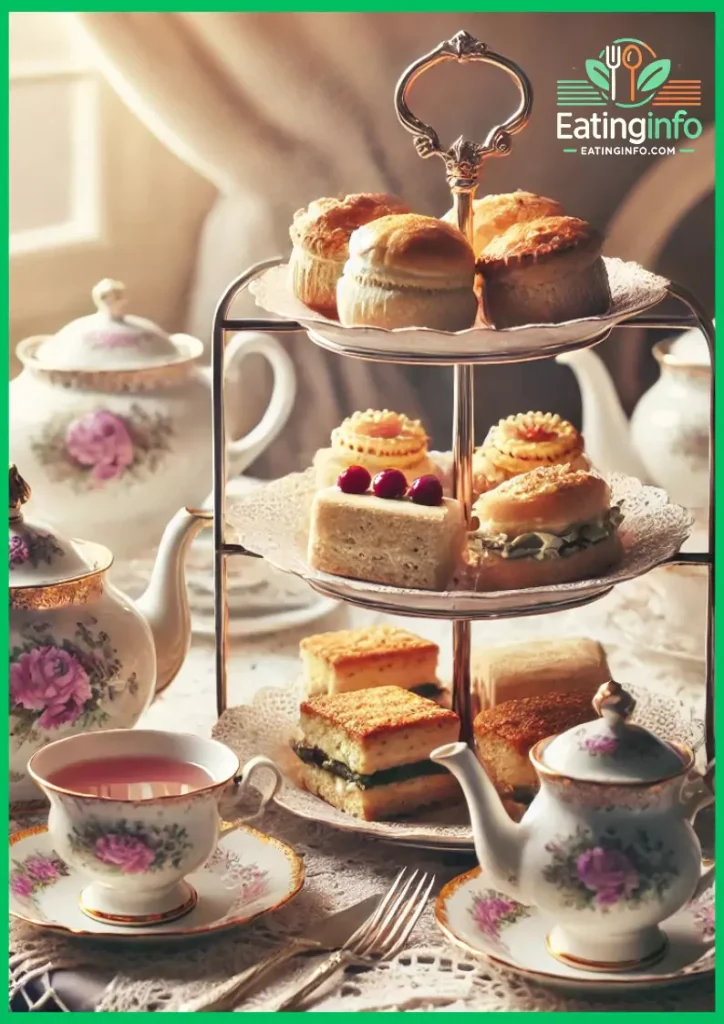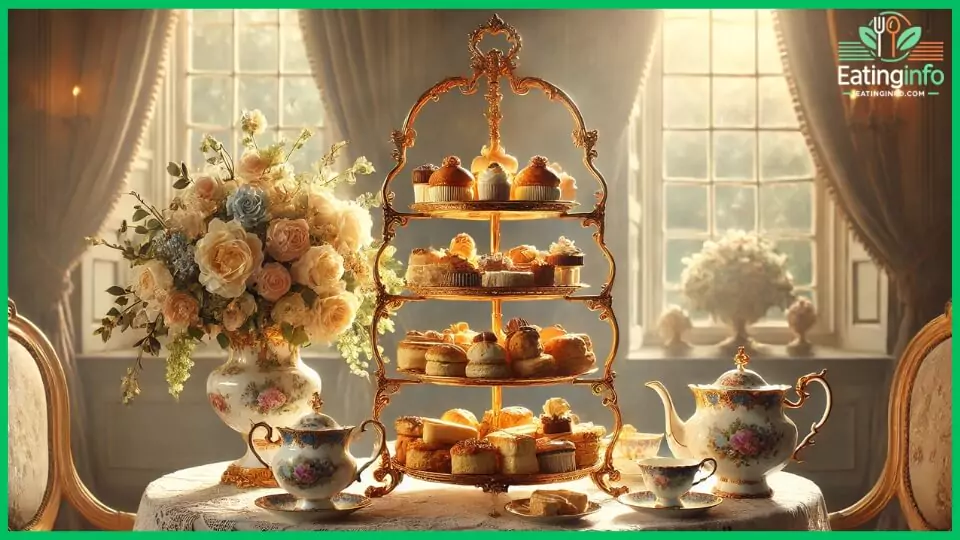English high tea isn’t actually a meal, per se—it’s an experience, a ritual, and a feast for the senses. Imagine a stunningly set table, delicate china, and an assortment of scrumptious treats that transport you to a place of elegance and beauty. So what do you really serve at an English high tea?
In this guide, we’ll examine the essentials of a traditional high tea, from savory to sweet, and all in between. Whether you’re hosting a formal event or simply indulging, this guide will help you create the perfect high tea experience.
What is English High Tea?

High tea began in 19th-century England as a hearty evening meal for the common laborer. Unlike dainty “afternoon tea” consumed by the gentry, high tea was a hearty spread intended to refill the body after a day of hard work. It typically consisted of meat courses, bread, and strong tea.
These days, high tea has become more of a decadent occasion that brings together both the savory and the sweet. Thicker than afternoon tea, modern-day high tea is also an elite one, with lovely offerings of food paired with a selection of teas that are just as exotic.
The Difference Between High Tea and Afternoon Tea
Many people confuse high tea with afternoon tea, but they are distinct experiences.
| Feature | High Tea | Afternoon Tea |
|---|---|---|
| Time of Day | Early evening (5-7 PM) | Mid-afternoon (3-5 PM) |
| Purpose | A full meal | A light refreshment |
| Food Served | Hearty dishes like pies, meats, and bread | Light finger foods like sandwiches and cakes |
| Social Class Origin | Working class | Aristocracy |
High tea is more substantial, often including cooked dishes, while afternoon tea is a refined, delicate experience with finger foods and pastries.
Setting the Perfect High Tea Table
A beautifully arranged table is essential for creating the perfect high tea ambiance. Here’s how to set it up:
- Fine China and Teapots: Use elegant teacups, saucers, and a decorative teapot to set the tone.
- Tiered Cake Stand: A traditional high tea setup includes a three-tiered stand—savory items on the bottom, scones in the middle, and sweets on top.
- Linen Napkins and Silverware: Use crisp linen napkins and polished cutlery to add a touch of sophistication.
- Fresh Flowers: A small floral arrangement enhances the elegance of your table.
Savory Treats: The Heart of High Tea
While sweet treats steal the spotlight, savory dishes are the foundation of a proper high tea.
Traditional Finger Sandwiches
No high tea is complete without delicate, crustless sandwiches. Popular fillings include:
- Cucumber and Cream Cheese: A light and refreshing choice.
- Smoked Salmon and Dill: A luxurious and flavorful option.
- Egg and Cress: A creamy, classic favorite.
- Ham and Mustard: A perfect balance of savory and spicy.
These sandwiches are served in small, bite-sized portions for elegance and ease.
Classic Meat and Fish Pies
Hearty pies are a traditional feature of high tea, providing a warm, comforting element to the meal. Some favorites include:
- Mini Steak and Ale Pies – Rich, meaty, and satisfying.
- Chicken and Leek Pies – Creamy and delicious.
- Smoked Haddock Tartlets – A delightful seafood option.
Scones with Clotted Cream and Jam
Scones are a quintessential part of high tea, best served warm with:
- Clotted Cream: Thick, rich, and indulgent.
- Strawberry or Raspberry Jam: Adds a sweet, tangy contrast.
Pro tip: Always spread the cream first, then the jam—it’s the British way!
Sweet Indulgences: A High Tea Must-Have
Traditional British Cakes
Some classic cakes that grace a high tea table include:
- Victoria Sponge: A light, fluffy cake with jam and cream.
- Battemberg Cake: A checkerboard sponge wrapped in marzipan.
- Lemon Drizzle Cake: Zesty and moist, a true crowd-pleaser.
Delightful Pastries and Tarts
- Eclairs: Filled with cream and topped with chocolate.
- Fruit Tarts: Buttery pastry filled with custard and fresh fruit.
- Madeleines: Light, delicate sponge cakes with a hint of citrus.
Biscuits and Shortbread
- Shortbread Fingers: Buttery and crumbly perfection.
- Digestive Biscuits: A classic pairing with tea.
Tea Selection: The Soul of High Tea
The right tea elevates the entire experience. Some timeless choices include:
- Earl Grey: Aromatic with a hint of bergamot.
- Darjeeling: A light, floral black tea.
- English Breakfast: Strong and full-bodied.
- Chamomile or Peppermint: Herbal options for a caffeine-free experience.
Elegant Touches: Presentation and Etiquette
- Serve with Grace: Always pour tea for your guests before yourself.
- Sip, Don’t Slurp: Take small, quiet sips.
- Pinkies Down: Contrary to popular belief, keeping your pinky up is considered improper.
Tips for Hosting the Perfect High Tea at Home
- Plan Your Menu Carefully: Balance savory and sweet items.
- Use Proper Tableware: Beautiful teacups, plates, and silverware enhance the experience.
- Create a Cozy Ambiance: Soft music, fresh flowers, and candles set the mood.
- Enjoy the Moment: High tea is about savoring every bite and sip in good company.
English high tea is an ancient tradition that combines sophistication, extravagance, and hospitality. Whether at a formal event or a peaceful afternoon, a well-planned high tea spread elevates the experience to something extraordinary. So get your best china, steep a pot of tea, and indulge in the taste of a perfect high tea.
FAQs
1. Can I serve coffee instead of tea at high tea?
Yes! While tea is traditional, offering coffee as an alternative is perfectly acceptable.
2. What’s the best way to keep scones fresh?
Store them in an airtight container at room temperature and warm them slightly before serving.
3. How many items should I serve at a high tea?
Aim for 3-4 savory options, 3-4 sweet treats, and at least one type of scone.
4. Is high tea suitable for children?
Absolutely! Offer fun variations like mini sandwiches and chocolate treats.
5. Can I make a gluten-free high tea?
Yes, many bakeries offer gluten-free alternatives, and you can make your own using suitable ingredients.

